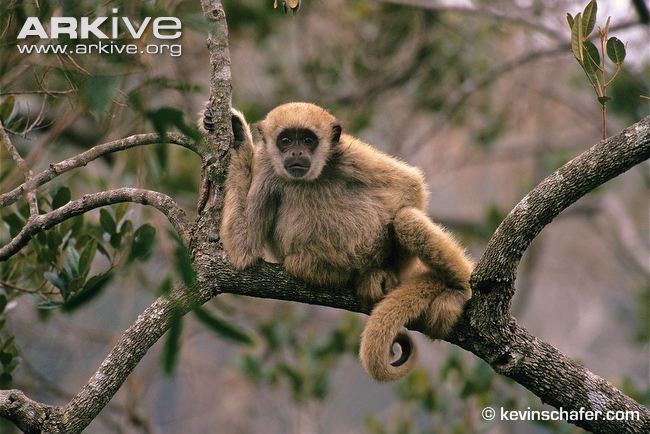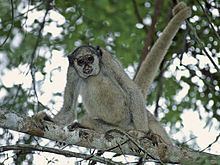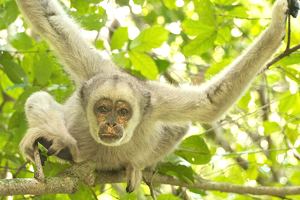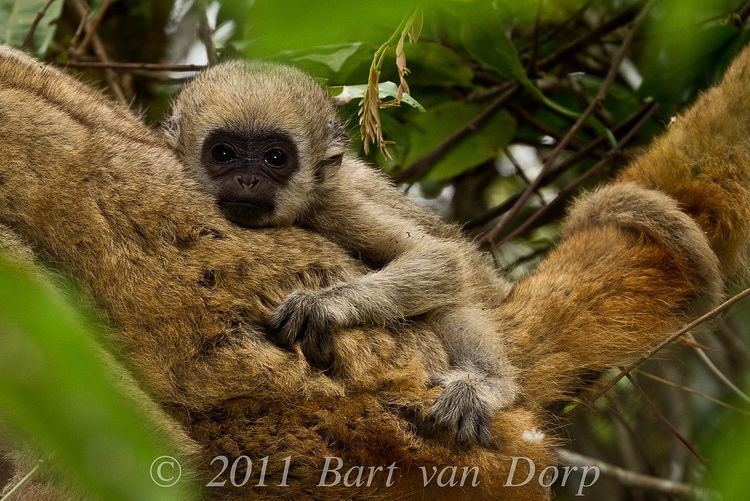Scientific name Brachyteles hypoxanthus | Phylum Chordata Genus Brachyteles Rank Species | |
 | ||
Similar Muriqui, Southern muriqui, Brown howler, Gray woolly monkey, Buffy‑headed marmoset | ||
Northern muriqui brachyteles hypoxanthus
The northern muriqui (Brachyteles hypoxanthus) is an endangered muriqui (woolly spider monkey) species endemic to Brazil. It is unusual among primates in that it shows egaliterian social relationships. It is found in the Atlantic Forest region of the Brazilian states of Rio de Janeiro, Espírito Santo, Minas Gerais and Bahia. Muriquis are the largest species of New World monkeys. The northern muriqui can grow up to 4.3 ft tall. It feeds mainly on leaves and twigs, but will also eat fruit. It often hangs upside-down by its prehensile tail while eating.
Contents

Identification

Northern muriquis can be individually recognized by their natural markings and facial features, such as fur color and patterning, ear shape, and face shape and pigmentation. Their sex can usually be determined within a week or so of birth, based on the shape and positioning of their genitalia. Female muriquis are more independent than males; they leave their natal groups at an age of about six years. Female muriquis engage in sex with multiple partners, which may serve to confuse paternity, limit male aggression, or improve odds of fertilization. Male muriquis have almost no interaction with infants. When there is an interaction between the two, the infant would be the one to initiate it.
Endangered

B. hypoxanthus is one of the world's most critically endangered primates, according to the IUCN Red List of Threatened Species. It is threatened by hunting and (in common with most other primates of the region) destruction and fragmentation of its Atlantic Forest habitat. Among the scattered populations of northern muriqui only one population, living in Caratinga is considered, as of now, viable for the next 100 years. The northern muriqui also suffers from very low genetic diversity and is poorly understood, causing problems in conservation. The estimated wild population of northern muriquis was raised from about 500 to 1000 individuals in 2005, due to new discoveries and research in other forests.
Human evolution relevance

The northern muriqui has been argued to be important to understanding human evolution, since it is one of the few primates that has tolerant, nonhierarchial relationships among and between males and females, a feature shared with hunter-gatherer humans, but which contrasts with the ranked relationships of most other primates. Group aggression is also rare. The success of males fathering offspring links to the maternal investment they gain from their mothers and coresident female kin. This provides support to the grandmother hypothesis.

